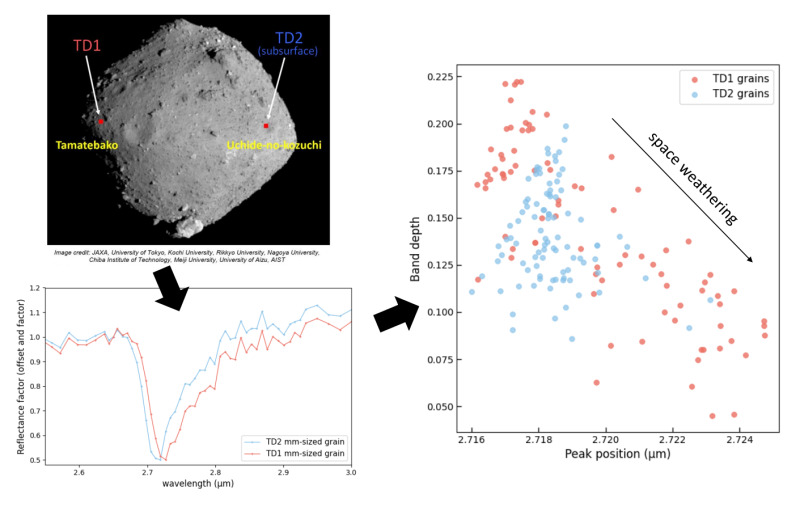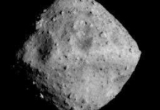Some samples from Ryugu are protected from the solar wind... but not all of them!
In December 2020, the Hayabusa2 spacecraft brought back to Earth 5.4 grams of samples from the primitive asteroid Ryugu. These grains were collected in two locations, with one collection after an artificial impact that excavated subsurface material. The entire collection is being analysed at JAXA’s Curation Facility (Sagamihara, Japan), under a controlled atmosphere to prevent contamination of the samples by the terrestrial atmosphere.
The analysis of around a hundred millimetre-sized grains by MicrOmega, a near-infrared hyperspectral microscope developed at the IAS, reveals variations in the composition of phyllosilicates between grains from the two collection sites. These variations in composition are linked to space weathering, a process that affects the physical and chemical properties of asteroids, and that combine bombardment by micrometeorites, solar wind ions and irradiation by cosmic rays. The spectral properties of the subsurface grains suggest that that they have never been exposed to the space environment.
The study of the molecular composition of the millimetre-sized grains also reveals that all Ryugu grains are depleted in water compared to the CI-type carbonaceous chondrites, despite their close mineralogical and elemental composition. This difference suggests that a part of the water in carbonaceous chondrites could originate from contamination by the terrestrial atmosphere. Ryugu samples thus become a new reference for characterising the water abundance in primitive bodies in the solar system.
Contact at IAS : Tania Le Pivert-Jolivet
Links:
- CNRS-INSU news item
- Scientific paper: Le Pivert-Jolivet, T., Brunetto, R., Pilorget, C. et al. Space weathering record and pristine state of Ryugu samples from MicrOmega spectral analysis. Nat Astron (2023).

In the order of the arrows: A: the two collection sites on the surface of asteroid Ryugu. B: absorption band at 2.7 µm observed in the near-infrared spectra of Ryugu millimetre grains. C: scatter plot between the depth and peak position of the band at 2.7 µm.
© A: JAXA, University of Tokyo, Kochi University, Rikkyo University, Nagoya University, Chiba Institute of Technology, Meiji University, University of Aizu, AIST.




